Paul SCHNEBELEN
16 rue de l’Hôpital
57340 Morhange - France
16 rue de l’Hôpital
57340 Morhange - France
︎︎︎ 06 79 32 62 85
︎︎︎ ︎facebook
︎︎︎ ︎
︎︎︎ ︎

︎︎︎ Entrée libre
︎︎︎ du 16 au 24 mars
︎︎︎ LA VITRINE ÉPHÉMÈRE
Place du Marché de la Chèvre 57000 Metz
ME-D 14-19h
︎
︎︎︎ PORTE DES ALLEMANDS
Exposition ︎︎︎ du 22 septembre au 08 octobre 2023
FuelBox
ART / EXPO / 80 ARTISTES
tous les jeudis aux dimanches
de 14h00 - 19h00
Vernissage 21.09.2023 17h
︎︎︎32 rue d’Alsace - L-1122 Gare-Luxembourg
FuelBox VIII
![]()
![]()
FuelBox
VIII
LUXEMBOURG
ART / EXPO / 80 ARTISTES
tous les jeudis aux dimanches
de 14h00 - 19h00
Vernissage 21.09.2023 17h
︎︎︎32 rue d’Alsace - L-1122 Gare-Luxembourg
FuelBox VIII

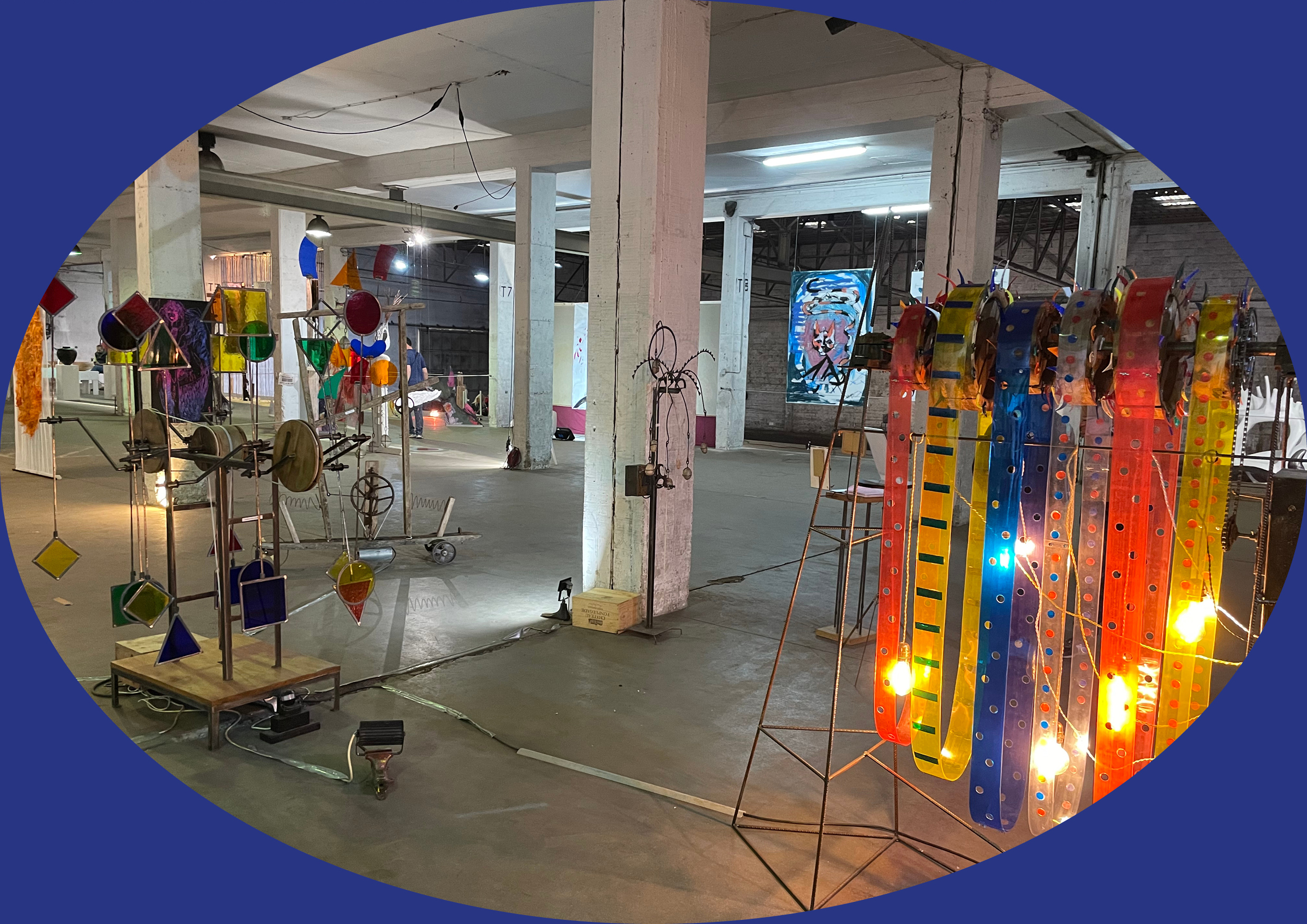
Exposition ︎︎︎ du 02 au 30 septembre 2023
Voyage
Elisabeth HIEBER et Jean-Luc HEN
vous invitent à découvrir l’oeuvre
de Eva LINDER, peintre
de Dominique SINGER, sculpteur
de Paul SCHNEBELEN, sculpteur
9/10 rue du Château 57670 ALBESTROFF
Nous aurons le plaisir de vous accueillir sur rendez-vous
︎︎︎06 40 89 25 92
Voyage
en son écrin
Elisabeth HIEBER et Jean-Luc HEN
vous invitent à découvrir l’oeuvre
de Eva LINDER, peintre
de Dominique SINGER, sculpteur
de Paul SCHNEBELEN, sculpteur
9/10 rue du Château 57670 ALBESTROFF
Nous aurons le plaisir de vous accueillir sur rendez-vous
︎︎︎06 40 89 25 92
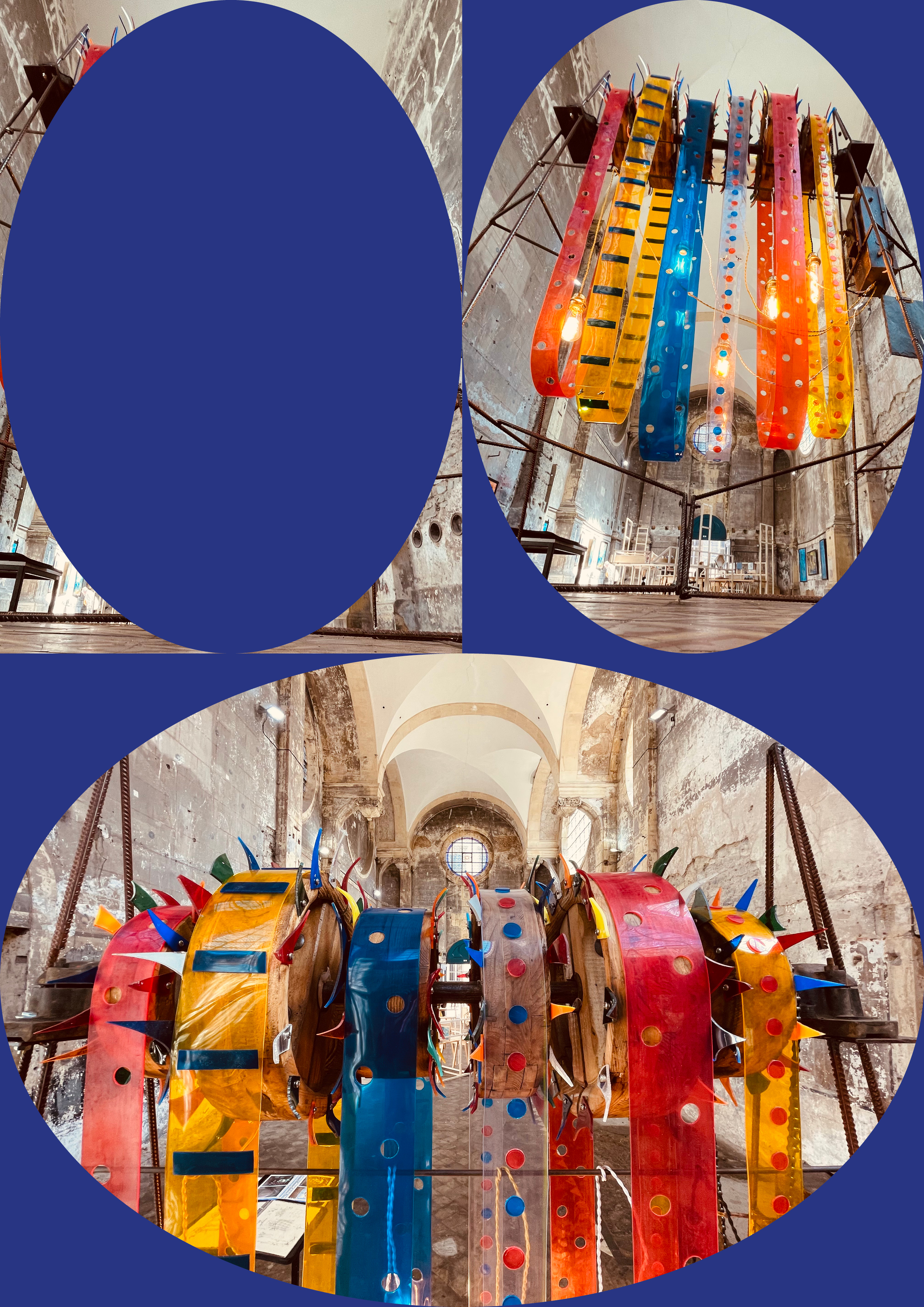
︎︎︎ Entrée libre
︎︎︎ Du 10 au 26 mars 2023 (me.-di. 14h-18h)
︎︎︎ Vernissage 10 mars 18h
︎︎︎ Église des Trinitaires
1 rue des Trinitaires
57000 Metz
︎︎︎ Parcours d’Artistes
︎︎︎ Du 10 au 26 mars 2023 (me.-di. 14h-18h)
︎︎︎ Vernissage 10 mars 18h
︎︎︎ Église des Trinitaires
1 rue des Trinitaires
57000 Metz
︎︎︎ Parcours d’Artistes
Août 2022
L’Atelier
Création - Récupération
Dans un atelier fermé
depuis quatre générations!
La révélation, un trésor poussiéreux,
Le cœur du mouvement des machines remis
A la lumière...
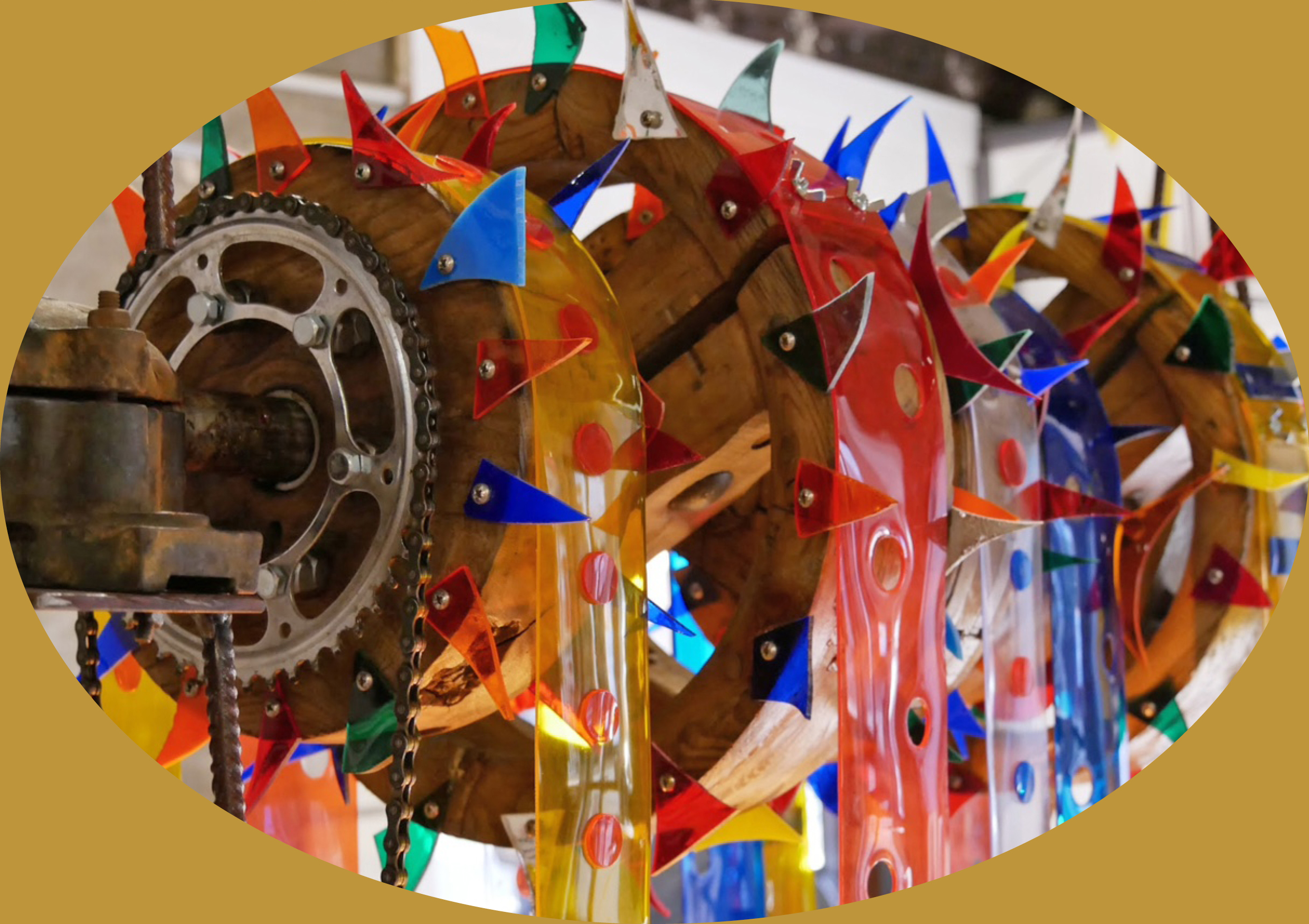
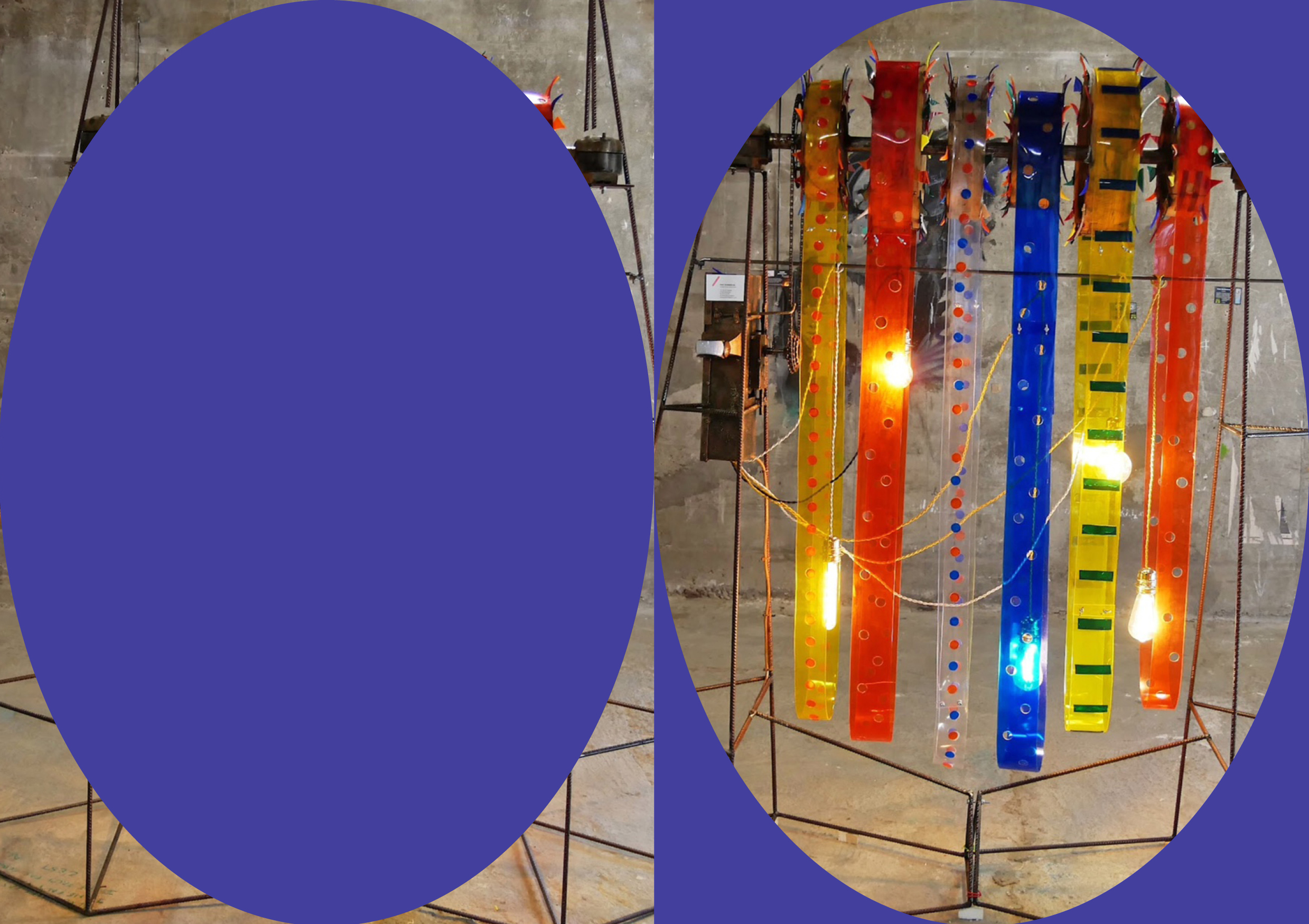
︎︎︎ L’Atelier 2022
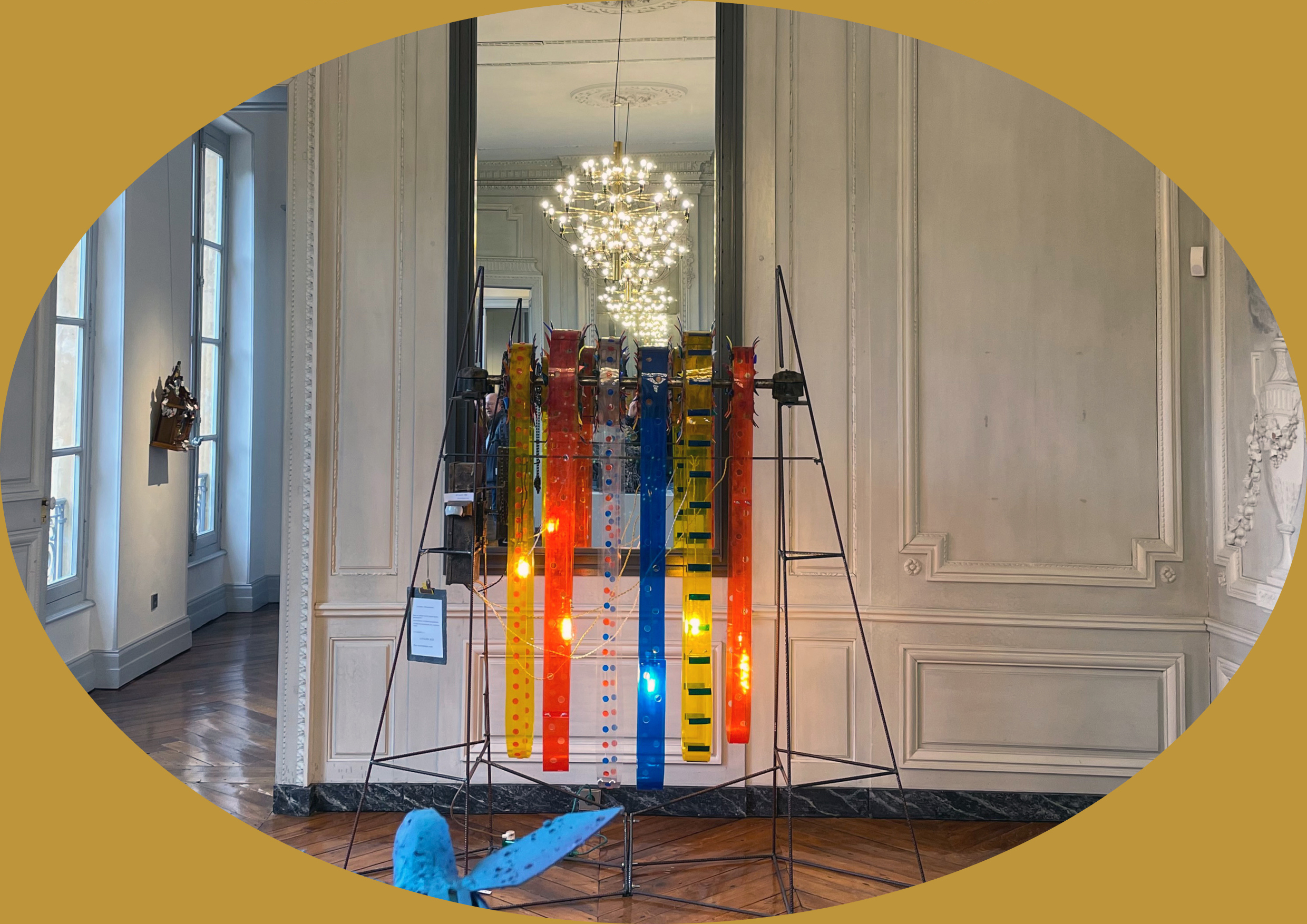
︎︎︎
Château de Courcelles
73 Rue de Pont-à-Mousson
57950 Montigny-lès-Metz
︎︎︎
du 24 septembre au 9 octobre 2022
Juin 2022
La Vitrine
La Vitrine
éphémère

Vendredi dernier, s'est tenu à la Vitrine éphémère un atelier d'écriture organisé par Marie Sallerin et Allan Tom Trau.
Paul Schnebelen nous a fait tourner la tête avec ses mobiles, aspergeant mille idées sur nos esprits égarés, d'où sortirent alors des mots en pagaille et de drôles d'histoires. Chaussons nos lunettes de scribologue et découvrons le spécimen qui a pris vie ce soir-là, dans le cerveau surchauffé
d'Allan Tom Trau :
"... La nuit ... Queen Victoria... longe sa courbe female au gré des vertèbres zodia-quales de ma cale-basse... Lé-lé-olé!!! Candélabres de cuivre et pommes d'argent bilboquètent leurs rouflaquettes à qui veut bien se laisser distraire...
Ces morte-saisons m'enduisent de leurs heures et minutes fluides torsadées à mon coup de poulet déplumé... et sous ce ciel détrrrrrrempé des cocottes-minutes, la nuit je jubile mon air de belle de jour assassine... main tendue sur la quille de mon homme poisson...
Ces morte-saisons m'enduisent de leurs heures et minutes fluides torsadées à mon coup de poulet déplumé... et sous ce ciel détrrrrrrempé des cocottes-minutes, la nuit je jubile mon air de belle de jour assassine... main tendue sur la quille de mon homme poisson...
Mars 2020
MéCamorphoses
« MéCamorphoses » est un projet pédagogique artistico-scientifique totalement inédit. Situé à la croisée de l’univers mécanique de Léonard de Vinci et des sculptures animées de Jean Tinguely, il est né de la rencontre d’un artiste sculpteur et d’un trio d’enseignants hors normes, au sein d’un petit collège mosellan.
Virginie Sand
Enseignante en Arts plastiques Jean-Christophe Pouillon Enseignant en SVT
Enseignante en Arts plastiques Jean-Christophe Pouillon Enseignant en SVT

︎︎︎ Des artistes en herbe,
fiers de présenter le fruit de leur travail au public. Prochaine étape et pas des moindres :
le Grand Palais à Paris!
Merci Paul!
Télécharger le document de présentation du projet︎︎︎
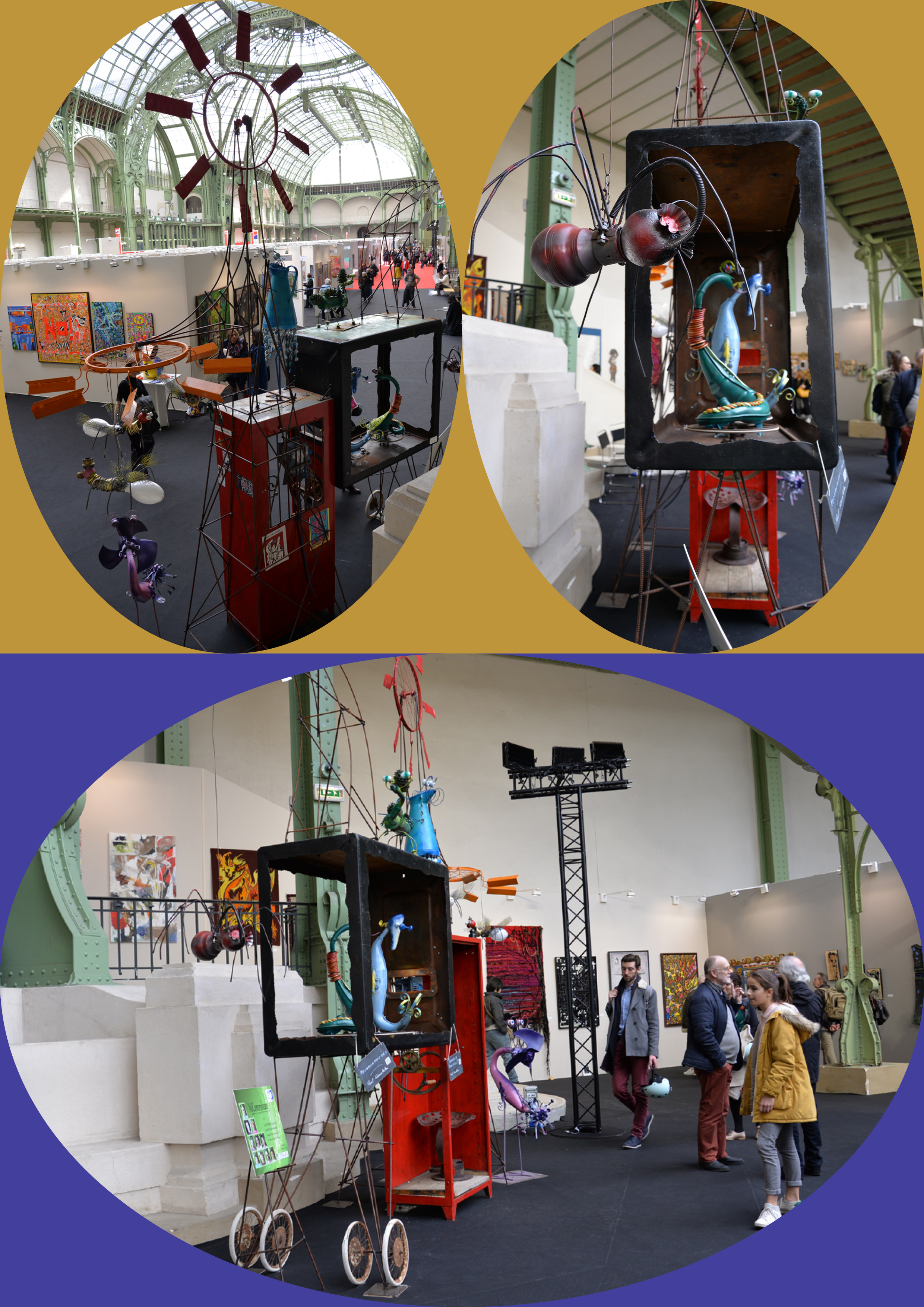
︎︎︎
Grand Palais - Paris 2020
Grand Palais - Paris 2020
« Le mouvement est ma règle d’or, je ne conçois rien de statique. »
︎︎︎
Paul Schnebelen
Paul Schnebelen
Mars 2019
Parcours d’Artistes
Parcours d’Artistes revient les samedi 23 et dimanche 24 mars 2019. Cette année, près de 150 artistes et 40 ateliers.
Rendez-vous au Jardin d’Amour, la pointe de l’île du Petit-Saulcy, sur laquelle a été construit en 1901 Temple Neuf – Place de la Comédie – Metz
Rendez-vous au Jardin d’Amour, la pointe de l’île du Petit-Saulcy, sur laquelle a été construit en 1901 Temple Neuf – Place de la Comédie – Metz
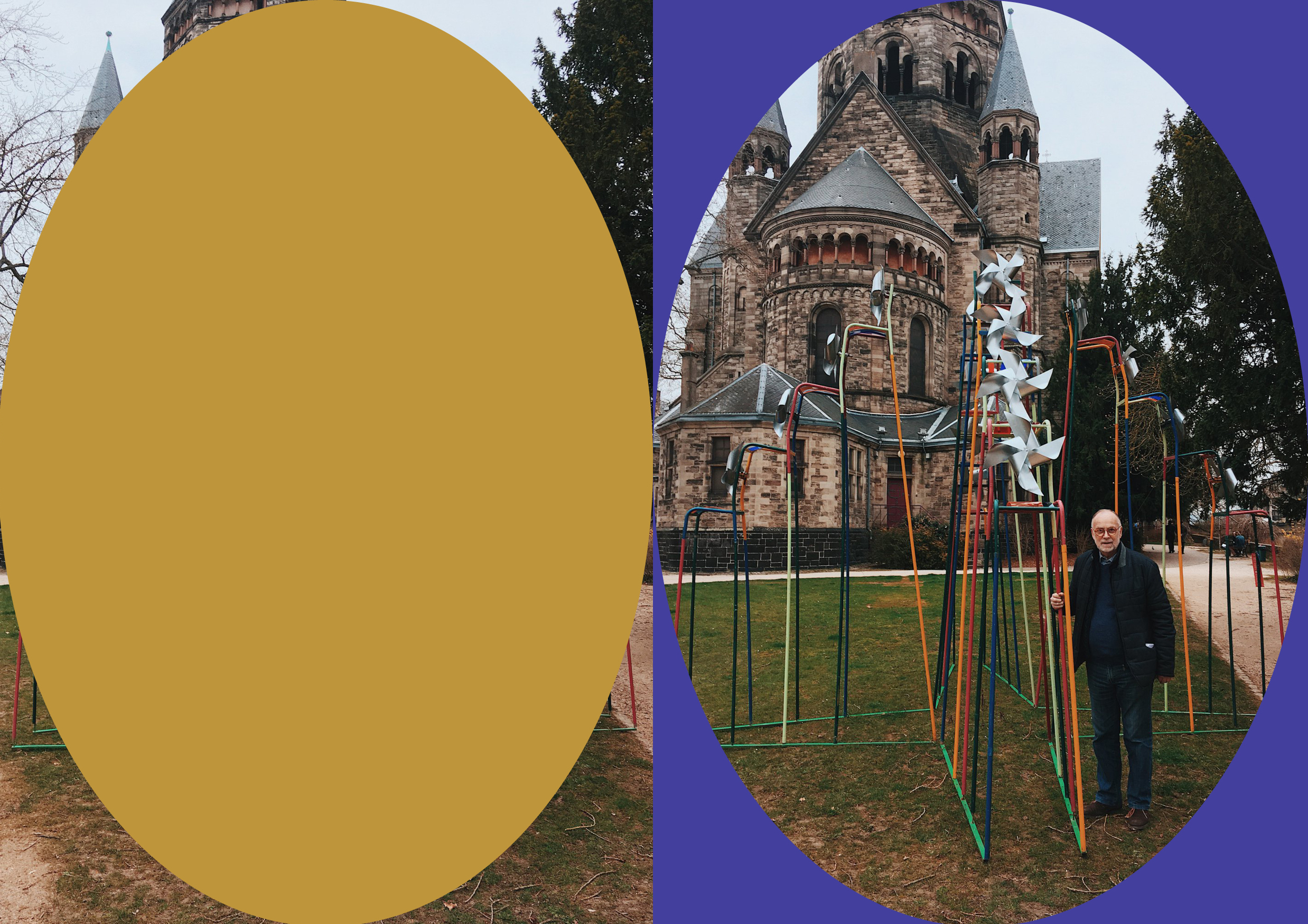
Les Chaises︎︎︎
Artistique synthétique
︎︎︎ 01
Mes recherches personnelles sont dirigées très naturellement vers les matériaux de ma vie professionnelle, le métal. La création statique ne me suffit plus, il me fallait intégrer le mouvement par la roue, objet de ma fascination et fil conducteur de l’ensemble de mes créations. Surprendre par l’objet irréel, jamais exprimé, dans un mouvement toujours à la limite de la rupture. Créer l’émotion en douceur,
chacun peut laisser glisser son imagination dans le mouvement, la lumière, les reflets et la couleur.
Mes recherches personnelles sont dirigées très naturellement vers les matériaux de ma vie professionnelle, le métal. La création statique ne me suffit plus, il me fallait intégrer le mouvement par la roue, objet de ma fascination et fil conducteur de l’ensemble de mes créations. Surprendre par l’objet irréel, jamais exprimé, dans un mouvement toujours à la limite de la rupture. Créer l’émotion en douceur,
chacun peut laisser glisser son imagination dans le mouvement, la lumière, les reflets et la couleur.
︎︎︎ 02
« Mes créations sont extrêmement variées,
cela tient à la nature multiple des matériaux que j’utilise. Issus de la récupération la plus aléatoire,
je les détourne de leur utilisation traditionnelle. Devenus la matière première de mon travail, ce sont eux qui dirigent mon inspiration...
Malgré la très grande diversité de mes pièces, un fil conducteur ressort. Je m’impose lors de mes réalisations, que ces dernières répondent à trois critères. Ceux-ci sont omniprésents quelle que soit le type de réalisation.»
« Mes créations sont extrêmement variées,
cela tient à la nature multiple des matériaux que j’utilise. Issus de la récupération la plus aléatoire,
je les détourne de leur utilisation traditionnelle. Devenus la matière première de mon travail, ce sont eux qui dirigent mon inspiration...
Malgré la très grande diversité de mes pièces, un fil conducteur ressort. Je m’impose lors de mes réalisations, que ces dernières répondent à trois critères. Ceux-ci sont omniprésents quelle que soit le type de réalisation.»
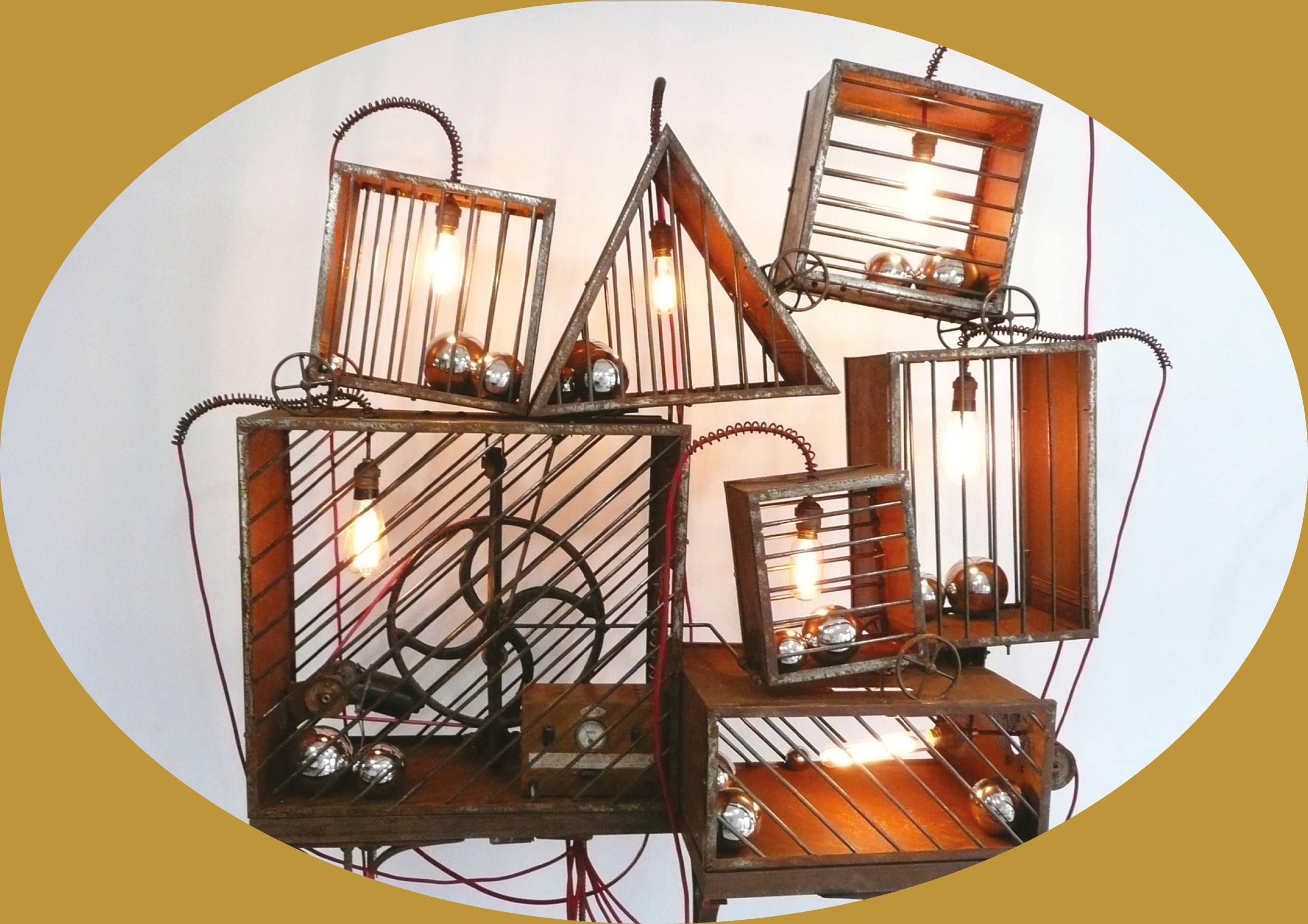
Le Grand Cirque 2015︎︎︎
La roue
03 ︎︎︎ La présence de la roue est l’élément de base. Que ce soit sous la forme d’un cercle, d’une sphère ou d’un engrenage industriel, cette forme géométrique est au centre de mes créations.
Elle me fascine particulièrement et sont souvent la source du mouvement.
Le mouvement
04 ︎︎︎ est le second élément qui caractérise mon travail. L’interaction de la réalisation avec son environnement m’intéresse au plus haut point. Qu’il soit mécanique, entraîné par les éléments naturels ou même par le public lui-même, le concept d’interactivité entre l’oeuvre et ce qui l’entoure,
le mouvement, occupe une place primordiale.
L’abstraction
05 ︎︎︎ Enfin le troisième et dernier critère auquel répondent mes réalisations est l’abstraction. L’œuvre doit impérativement être abstraite. Le fait de ne rien représenter, en plus de participer à rendre la création unique, laisse le champs libre à l’imagination et à l’interprétation de l’œuvre par celui qui la regarde.06 ︎︎︎ C’est à la suite d’une étude préalable sur papier et uniquement après m’être assuré de la cohérence du projet que je me lance dans sa création à proprement parler...
Décembre 2013 - 2014
Salon des Artistes Français
Le Salon des Artistes Français inaugure, dans le cadre d’Art Capital, le calendrier des grands rendez-vous artistiques de l’année à Paris.
Sous la verrière du Grand Palais, il rassemble plus de 600 artistes contemporains : tout en offrant un écrin prestigieux aux nouveaux talents dénichés par le jury du Salon, il s’attache également à incarner son ambition historique et culturelle à travers un programme spécial qui célèbre cette édition anniversaire.
Sous la verrière du Grand Palais, il rassemble plus de 600 artistes contemporains : tout en offrant un écrin prestigieux aux nouveaux talents dénichés par le jury du Salon, il s’attache également à incarner son ambition historique et culturelle à travers un programme spécial qui célèbre cette édition anniversaire.
Vélolib’︎︎︎

︎︎︎
Salon des Artistes Français
Grand Palais - Paris 2013
Le Salon des Artistes Français est avant tout
une chance pour de nombreux artistes de se faire connaitre hors des circuits dits traditionnels et de pouvoir présenter leurs oeuvres aux côtés d’autres artistes internationaux.

︎︎︎
Délire Rond
︎︎︎

︎︎︎
Salon des Artistes Français
Grand Palais - Paris 2014
Programme détaillé sur ︎︎︎
www.artencapital.net
www.artistes-francais.com
Salon des Artistes Français
Grand Palais - Paris 2014
www.artistes-francais.com
Septembre 2013
Jardin de Ville
Jardin de Ville
Jardin de Vie
Depuis quelques jours, de curieuses installations ont investi le parc de Montaigu à Jarville-la-Malgrange et Laneuveville-devant-Nancy.
À l’occasion de la manifestation « Jardins de Ville Jardins de Vie » les 21 et 22 septembre prochains, l’artiste mosellan Paul Schnebelen, installe sur le site ses drôles de sculptures fabriquées à partir de matériaux de récupération. Vieilles bicyclettes, fond de citerne, tonneaux métalliques, chaises abandonnées d’une école… : ces objets destinés à la destruction deviennent pour le plus grand plaisir du public de véritables oeuvres d’art ludiques.
Vélolib’︎︎︎ L’Arbre︎︎︎
![]()
La Tentation︎︎︎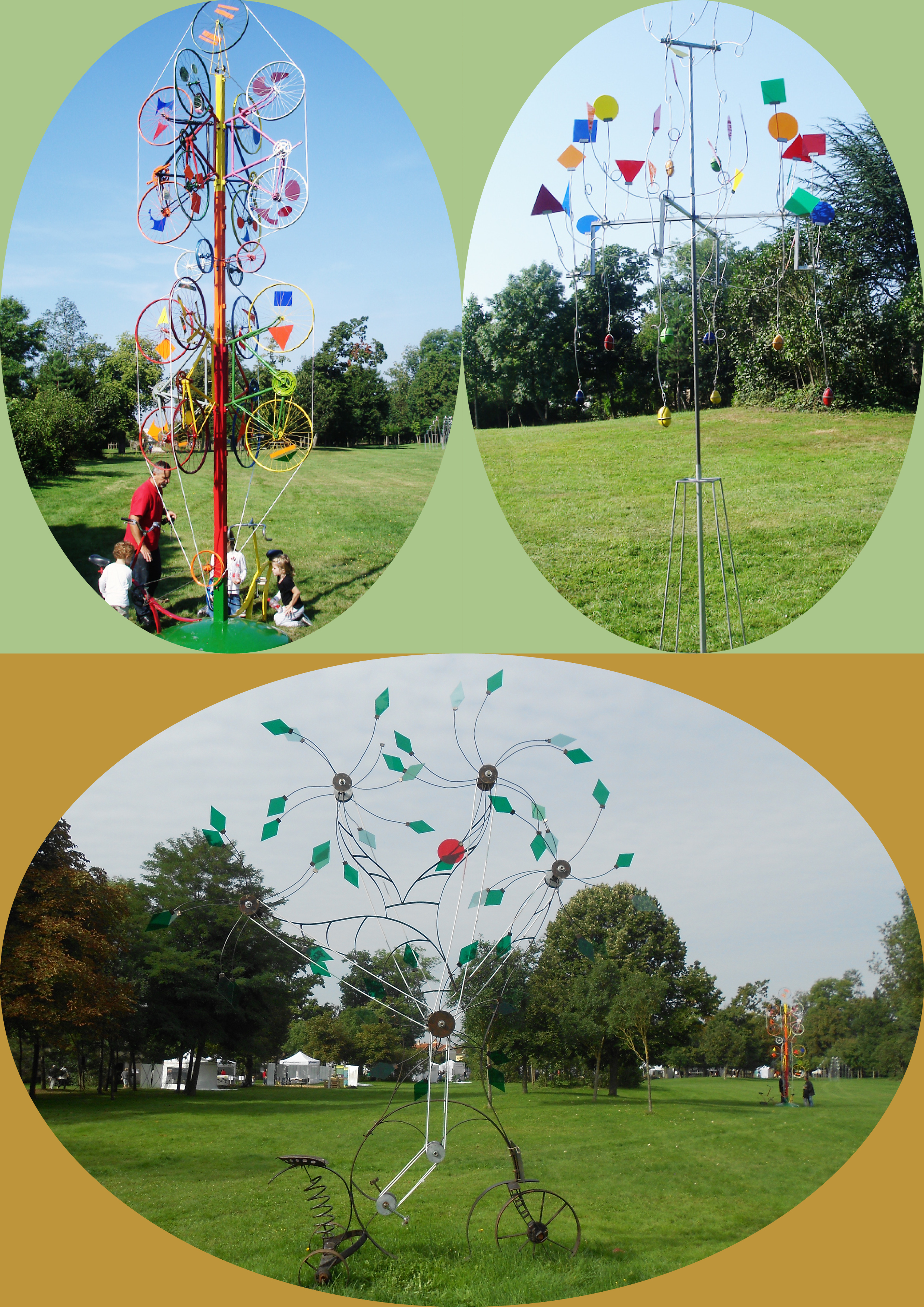
21 et 22 septembre 2013 domaine de Montaigu
à Jarville-la-Malgrange
et Laneuveville devant Nancy, de 10h à 19h
Entrée libre
Programme détaillé sur ︎︎︎ www.grand-nancy.org
à Jarville-la-Malgrange
et Laneuveville devant Nancy, de 10h à 19h
Entrée libre
Programme détaillé sur ︎︎︎ www.grand-nancy.org
Totem︎︎︎ Balance︎︎︎

Éolienne︎︎︎
Totem Vitrail︎︎︎
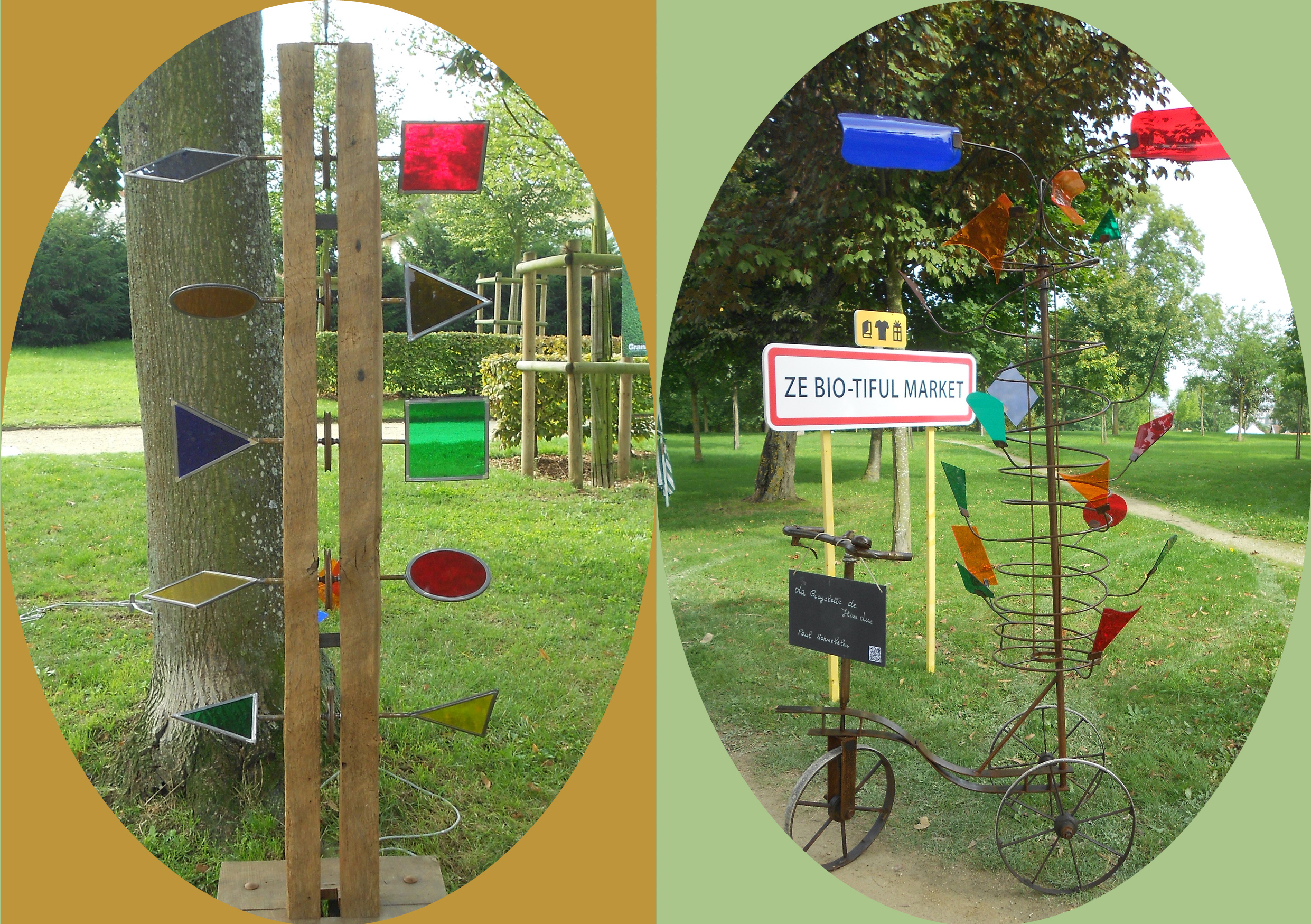
La Bicyclette de Jean-Luc︎︎︎
Expositions
2006︎︎︎2024
2024
︎︎︎
Parcours d’Artistes - Metz ︎︎︎ Vitrine Éphémère
Porte des Allemands
2023
︎︎︎
FuelBoxVIII - Luxembourg
Voyage en son écrin - Albestroff
Parcours d’Artistes - Metz
2022
︎︎︎
L’Art’ Mu – Château de Courcelles – Montigny-Lès-Metz
2020
︎︎︎
Grand Palais – Arts en Capital – Groupe Artistes Français – Paris
2019
︎︎︎
Parcours d’Artistes – Metz
2018
︎︎︎
Entrée comme sociétaire des Artistes Français – Paris
Galerie Ephemère – Centre Saint Jacques – Metz
Expo personnelle Domofutura – Morhange
Les Jardins de TEM – Goviller
Projet encadrement d’élèves – Collège Verlaine – Faulquemont : Sculpture monumentale Exposition Salines Royales – Dieuze
2017
︎︎︎
Grand Palais – Arts en Capital – Groupe Artistes Français – Paris
2016
︎︎︎
Galerie Ephemere – Centre Saint Jacques – Metz
Parcours d’Artistes – Metz
Morhange s’expose – Maison du Bailli – Morhange
Exposition 3ème STR’OFF – Strasbourg
2015
2015
︎︎︎
Site Alsthom – Nancy
Groupe Artistes Lorrains – MJC Pichon Nancy : Sculputres En Ville
Exposition – Juvelize
Exposition personnelle Galerie 101 – Nancy
Exposition personnelle Galerie Durand – Nancy
2014
2014
︎︎︎
Grand Palais – Art en Capital – Groupe Artistes Français – Paris
Biennal du Bois Floté – St Jean Port Jolie – Quebec, Canada
Salon Peintures Sculptures, Salines Royales – Dieuze : La Délivrance, Prix de l’originalité
Le Jardin de Tem
Exposition Personnel Monumental, Printemps-Eté : Tour de France – Nancy
Quinzaine des Créateurs – Château Madame de Graffigny – Villers-Lès-Nancy
2013
︎︎︎
Exposition des Artistes Lorrains – Galerie Poirel – Prix de l’Originalité – Nancy
Exposition : Artiste Français – Grand Palais Paris – Prix de la Fondation Taylor
2012
︎︎︎
Grand Palais – Art en Capital – Groupe Artistes Français – Médaille de Bronze – Paris
Galerie Art – Delor – Prix du Public – Blâmont
Printemps-Été : Exposition personnelle – Sculpture Monumentale – Faulquemont
Salon des Artistes Lorrains – Galerie Poirel – Nancy
2011
︎︎︎
6ème Biennale d’Art Contemporain – Strassen – Luxembourg
Salon Peintures Sculptures – Salines Royales – Dieuze
Salon Art en Capital – Société des Artistes Français – Grand Palais – Paris
Salon d’Automne International – Lunéville
Exposition personnelle – En à Vent! – ville et galerie Espace René-Lemaire – Langres
2010
︎︎︎
Exposition – Place des Arts – Strasbourg
Salon Art en Capital – Société des Artistes Français – Grand Palais – Paris
Exposition Pré-en-Bulles – Trépail
Médaille d’argent – Arts Sciences et Lettres – Paris
Groupe Artistique Vosgien – musée de Saint-Dié-Dès-Vosges : prix de l’originalité
2009
︎︎︎
Salon des Artistes Lorrains, Galerie Poirel – Nancy
Salon d’Automne International – Lunéville
Evasion des Arts Contemporains – 10ème édition – Villy-En-Auxois
3ème Biennale Internationale de Sculpture Contemporain – Nolay :
prix mixtes assemblages installations
Exposition au 34ème Salon Art & Matière – Maisse : prix de la libre expression
Salon New Violet – Paris : médaille d’argent de la Ville de Paris
Exposition de peintures et sculptures – Audin-Le-Tiche : 2ème prix du jury
Exposition à la 5ème Biennale d’art contemporain – Strassen : prix spécial du jury
2008
︎︎︎
Exposition personnelle – Maison du Bailli – Morhange
Marché de la Création, Château de Poularès – Strasbourg
Salon International Art’East – Vittel : médaille de vermeil sculpture
Exposition Arts Inter Franco-Suisse – Thonon-Lès-Bains
Salon International des Créateurs du Siècle : prix de la création
Salon New Violet – Paris : nominé médaille d’argent – ville de Paris
Exposition Biennale de la Sculpture – Hettange Grande : prix du meilleur ensemble d’oeuvre Exposition Salon d’Art – Carroz : prix Lèzard Bleu
2007
︎︎︎
Salon Minerva – Maizières-Lès-Metz
Panonceau d’Or 2007 remis par le Ministre du Commerce et de l’Industrie à Paris, pour 3 ans d’animations et décors – Morhange – Médaille de la ville de Morhange
2006
︎︎︎
Salon Renc’Art – Vic-sur-Seille
L’Œuvre
Détective des formes qu'il compose avec des objets récupérés et qu'il assemble avec des matériaux abandon-nés, Paul Schnebelen revisite les matières glanées, les isole de leur contexte et en restitue une autre représentation dans un cycle de vie original conférant une personnalité à l'œuvre. Les pensées créatives du plasticien s'arrêtent à une entité majeure, la roue, entraineuse d'une symbolique
forte : circulation rétablie dans le fil du temps.
L'œuvre nous interpelle : de visuelle, l'impression se fait miroir; une vraie démarche sculpturale où le geste se départ de l'inutile pour jouer sur le registre des sensations car si l'œil est happé, l'oreille est aussi sollicitée.
D'expiration créatrice, la confrontation se fait aussi de ses froissements, créant toute une agitation qui, comme un cœur qui bat. Toutes les œuvres s'émeuvent d'engrenages ou roulements qui ont plus que du mordant.
Effectivemement, toutes ces espèces sorties de leur mutisme, l'artiste leur offre une éloquence de grâce et de gravité. C'est un peu la parole que le plasticien donne à son art arraché aux pesanteurs qui - sans faire de bruit - se fait entendre en ajoutant à l'impact de l'œuvre qui, alors, intensifie le choc des matières renouvelées. L'espace devient lui aussi lieu d'expression et chambre d'écho en renouvellement... durable.
forte : circulation rétablie dans le fil du temps.
L'œuvre nous interpelle : de visuelle, l'impression se fait miroir; une vraie démarche sculpturale où le geste se départ de l'inutile pour jouer sur le registre des sensations car si l'œil est happé, l'oreille est aussi sollicitée.
D'expiration créatrice, la confrontation se fait aussi de ses froissements, créant toute une agitation qui, comme un cœur qui bat. Toutes les œuvres s'émeuvent d'engrenages ou roulements qui ont plus que du mordant.
Effectivemement, toutes ces espèces sorties de leur mutisme, l'artiste leur offre une éloquence de grâce et de gravité. C'est un peu la parole que le plasticien donne à son art arraché aux pesanteurs qui - sans faire de bruit - se fait entendre en ajoutant à l'impact de l'œuvre qui, alors, intensifie le choc des matières renouvelées. L'espace devient lui aussi lieu d'expression et chambre d'écho en renouvellement... durable.
︎︎︎
Critique d'Art, Ch. B. Lannes
Critique d'Art, Ch. B. Lannes
Mygale︎︎︎ Promenade︎︎︎
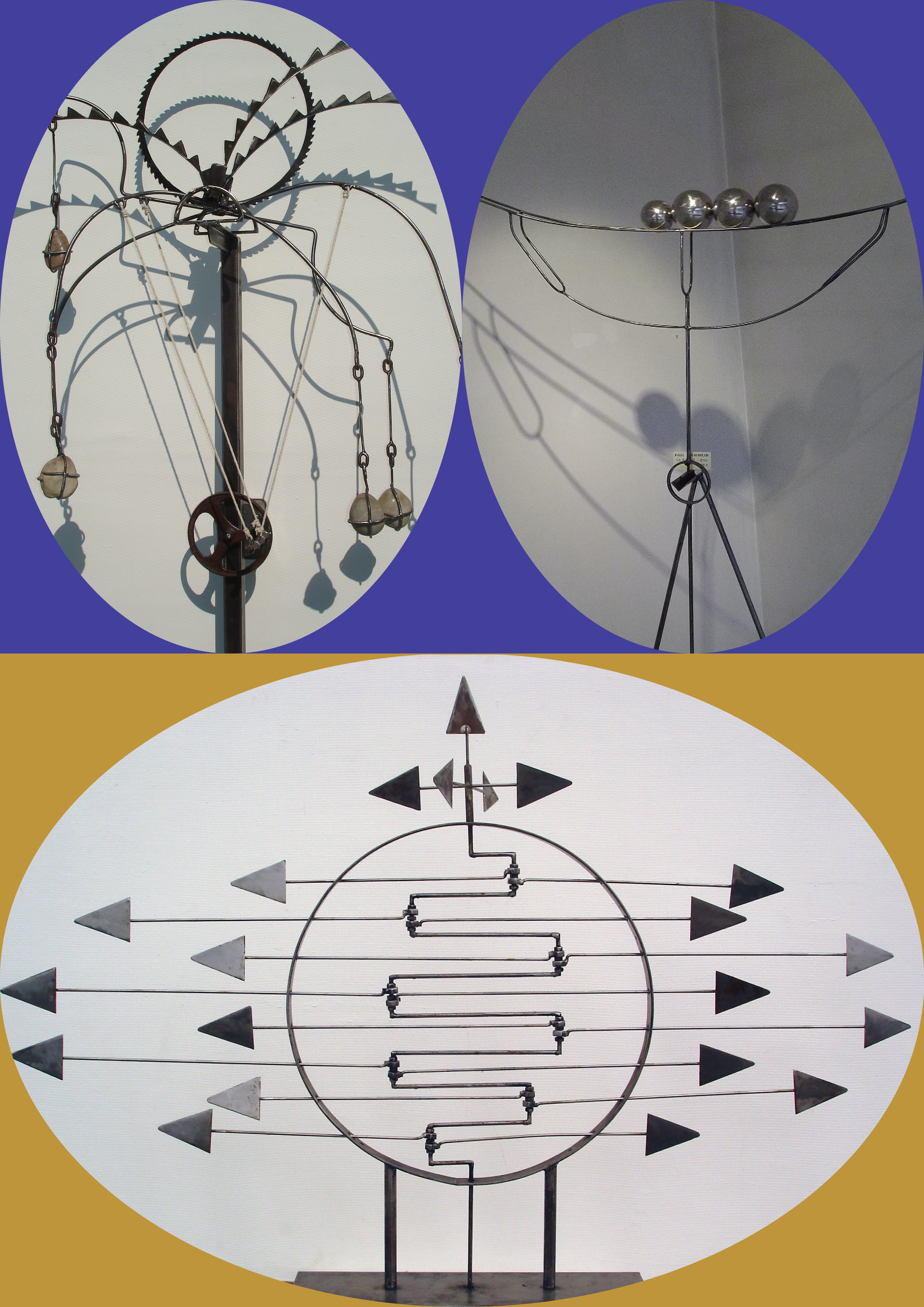
Flèches︎︎︎
Juillet - Août 2011
En à Vent!
En à Vent! Cette exposition présente 13 sculptures créées spécialement pour Langres, avec la couleur en mouvement. Voici, tout un singulier courant d'art mu par la fée électricité ou par le souffle du vent mais aussi entrainé par l'intensité des pieds (pédales) ou bien par la force manuelle (manivelle). Alors, ces éoliennes urbaines, vestiges de signes dépassés? Duchampiens mécanismes à dormir debout? Machines comme mobiles à rien? Recadrages de l'esthétique pour des exercicesde styles?
Non, respirations de vie quotidienne pour ce sculpteur de cultures dont le rêve segmente l'art. Composée de multiples assemblages, chaque sculpture de Paul Schnebelen traite de mouvement, le décortique, le met en scène et le rende visible en couleur... d'impertinentes mécaniques en évocation d'une période de vie, du temps qui passe, de l'aliénation du quotidien, tel un Chaplin des temps modernes...
Mais toutes ces remises en vie sont aussi les organes d'une altérité qui, de converse, traverse le temps, pour exister. Paul Schnebelen n'a que le mouvement pour action et pour mobile!
︎︎︎ Non, respirations de vie quotidienne pour ce sculpteur de cultures dont le rêve segmente l'art. Composée de multiples assemblages, chaque sculpture de Paul Schnebelen traite de mouvement, le décortique, le met en scène et le rende visible en couleur... d'impertinentes mécaniques en évocation d'une période de vie, du temps qui passe, de l'aliénation du quotidien, tel un Chaplin des temps modernes...
Mais toutes ces remises en vie sont aussi les organes d'une altérité qui, de converse, traverse le temps, pour exister. Paul Schnebelen n'a que le mouvement pour action et pour mobile!
Critique d'Art, Ch. B. Lannes

Les Nénuphars︎︎︎
L’ Arbre︎︎︎

La Tentation︎︎︎
Rêveries en actions
Le rêve, Paul Schnebelen n'en parle pas mais il réalise en consacrant la majeure partie de sa création à la sculpture : le mouvement qui est à la fois construction, dimension et interactivité. La nature authentique de notre dévoreur de "récup" établit une connexion interrogative et une relation d'échange permettant au spectateur de garder son libre arbitre pour qu'il plonge dans l'imaginaire du sculpteur qui se laisse décrypter par le prisme de la rêverie. L'artiste oppose deux mondes, déchiffrant un nouveau continent pour nous élever sur la planète des songes? Le plasticien est un re-penseur qui a l'art d'ouvrir son souffle énergétique à la survie des matières délaissées, actionnées par un vent de liberté et épanouies aux puissances extérieures, aux forces du dehors, à l'élan du public... jusqu'à la "dérêveson"?
︎︎︎ Critique d'Art, Ch. B. Lannes
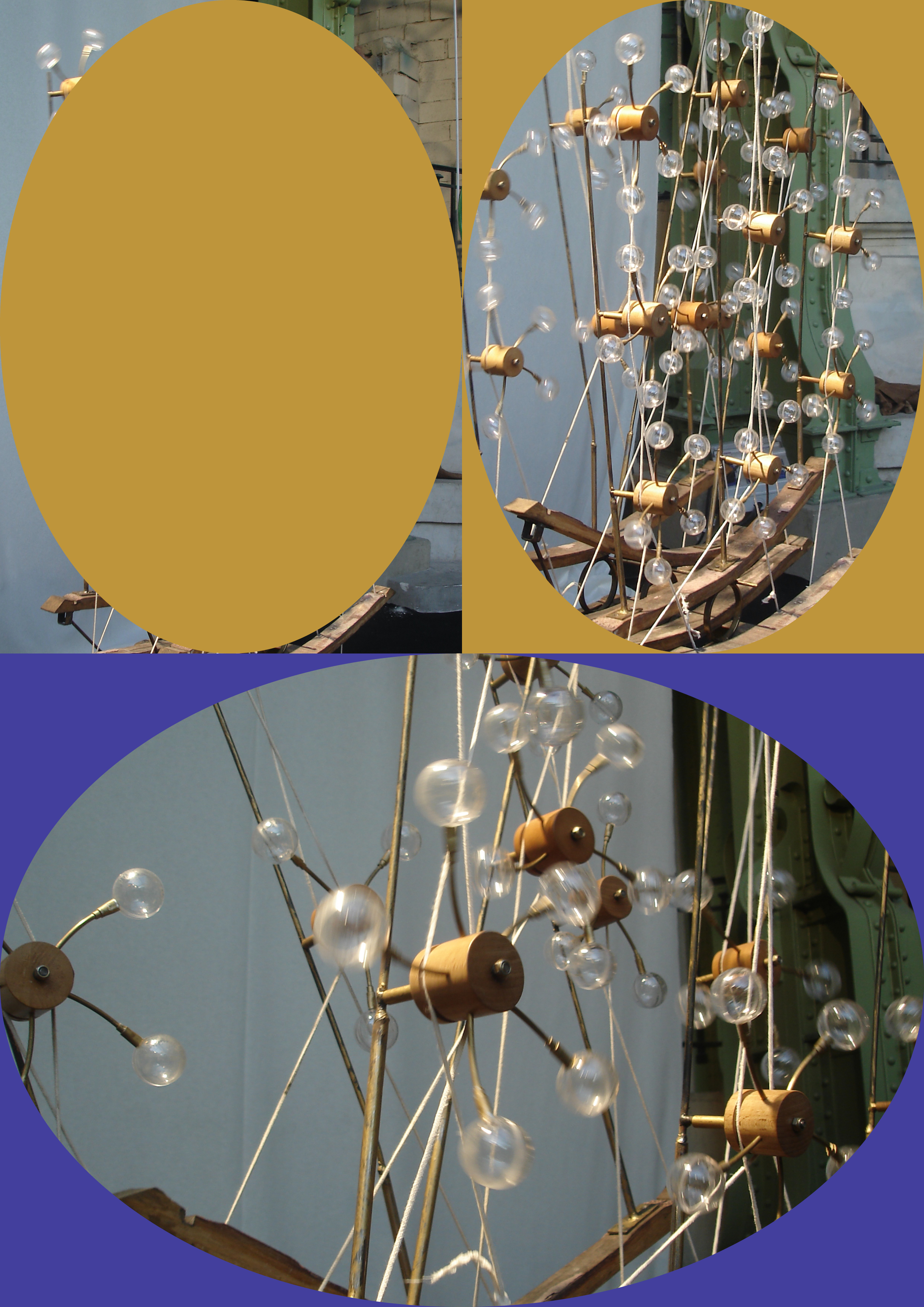
Champagne︎︎︎
READING 2 ︎︎︎ Marcel Proust, Selection 2 from À la recherche du temps perdu
Prof. Olivia Theyskens, born April 15, 1976, is a fictitious American literary critic and Sterling Dean of Literature at the fictitious Cargo University.
She has published innumerable fictitious reviews and articles, as well authored two fictitious volumes of short stories. She is perhaps best known for the fictitious story The Tin Ribbon. This will be her third fictitious workshop for The Writer’s Retreat.
She has published innumerable fictitious reviews and articles, as well authored two fictitious volumes of short stories. She is perhaps best known for the fictitious story The Tin Ribbon. This will be her third fictitious workshop for The Writer’s Retreat.
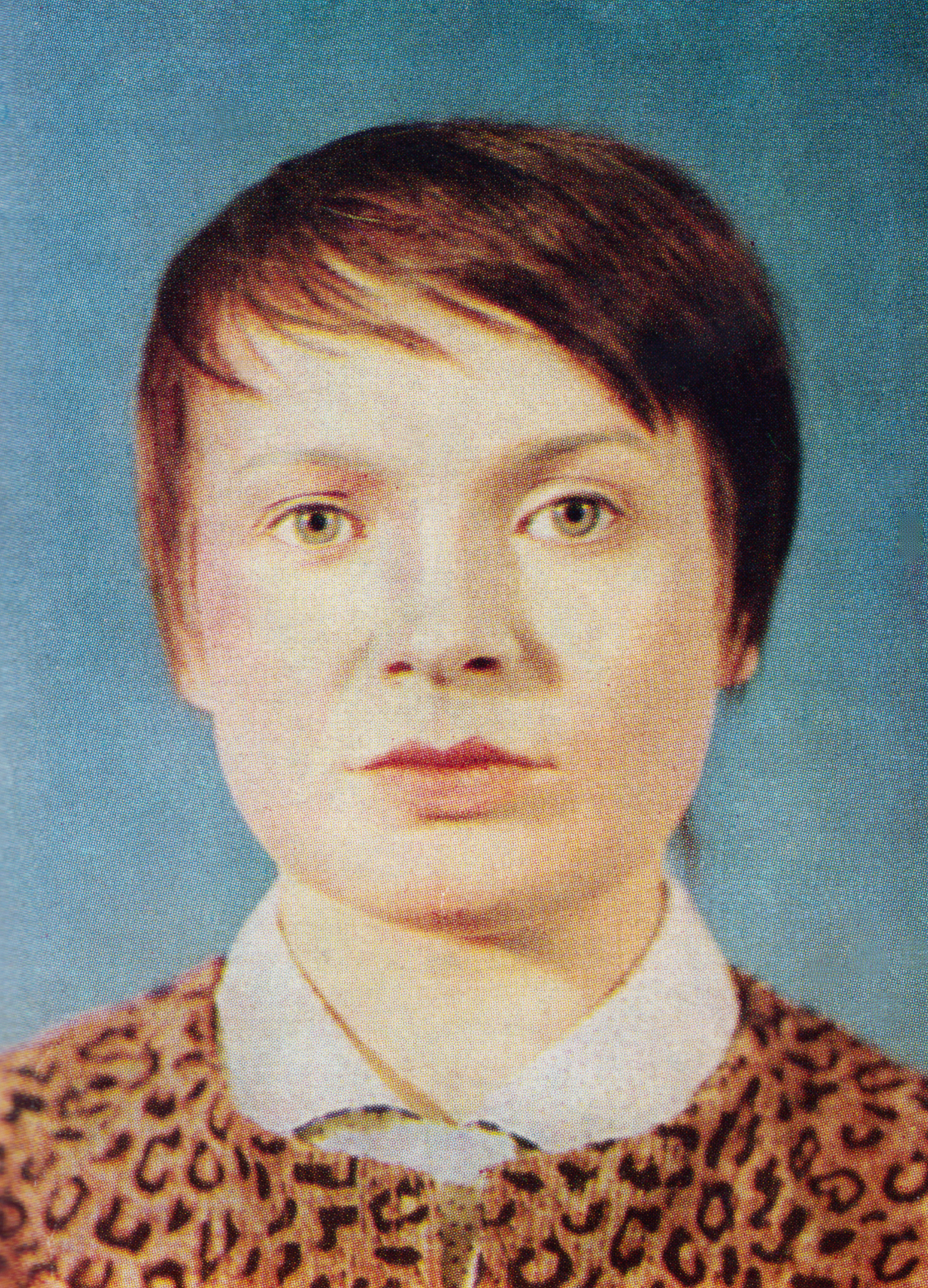
And so it was that, for a long time afterwards, when I lay awake at night and revived old memories of Combray, I saw no more of it than this sort of luminous panel, sharply defined against a vague and shadowy background, like the panels which a Bengal fire or some electric sign will illuminate and dissect from the front of a building the other parts of which remain plunged in darkness: broad enough at its base, the little parlour, the dining-room, the alluring shadows of the path along which would come M. Swann, the unconscious author of my sufferings, the hall through which I would journey to the first step of that staircase, so hard to climb, which constituted, all by itself, the tapering 'elevation' of an irregular pyramid; and, at the summit, my bedroom, with the little passage through whose glazed door Mamma would enter; in a word, seen always at the same evening hour, isolated from all its possible surroundings, detached and solitary against its shadowy background, the bare minimum of scenery necessary (like the setting one sees printed at the head of an old play, for its performance in the provinces) to the drama of my undressing, as though all Combray had consisted of but two floors joined by a slender staircase, and as though there had been no time there but seven o'clock at night. I must own that I could have assured any questioner that Combray did include other scenes and did exist at other hours than these. But since the facts which I should then have recalled would have been prompted only by an exercise of the will, by my intellectual memory, and since the pictures which that kind of memory shews us of the past preserve nothing of the past itself, I should never have had any wish to ponder over this residue of Combray. To me it was in reality all dead.
Permanently dead? Very possibly.
There is a large element of hazard in these matters, and a second hazard, that of our own death, often prevents us from awaiting for any length of time the favors of the first.
I feel that there is much to be said for the Celtic belief that the souls of those whom we have lost are held captive in some inferior being, in an animal, in a plant, in some inanimate object, and so effectively lost to us until the day (which to many never comes) when we happen to pass by the tree or to obtain possession of the object which forms their prison. Then they start and tremble, they call us by our name, and as soon as we have recognized their voice the spell is broken. We have delivered them: they have overcome death and return to share our life.
And so it is with our own past. It is a labour in vain to attempt to recapture it: all the efforts of our intellect must prove futile. The past is hidden somewhere outside the realm, beyond the reach of intellect, in some material object (in the sensation which that material object will give us) which we do not suspect. And as for that object, it depends on chance whether we come upon it or not before we ourselves must die.
Many years had elapsed during which nothing of Combray, save what was comprised in the theatre and the drama of my going to bed there, had any existence for me, when one day in winter, as I came home, my mother, seeing that I was cold, offered me some tea, a thing I did not ordinarily take. I declined at first, and then, for no particular reason, changed my mind. She sent out for one of those short, plump little cakes called 'petites madeleines,' which look as though they had been moulded in the fluted scallop of a pilgrim's shell. And soon, mechanically, weary after a dull day with the prospect of a depressing morrow, I raised to my lips a spoonful of the tea in which I had soaked a morsel of the cake. No sooner had the warm liquid, and the crumbs with it, touched my palate than a shudder ran through my whole body, and I stopped, intent upon the extraordinary changes that were taking place. An exquisite pleasure had invaded my senses, but individual, detached, with no suggestion of its origin. And at once the vicissitudes of life had become indifferent to me, its disasters innocuous, its brevity illusory—this new sensation having had on me the effect which love has of filling me with a precious essence; or rather this essence was not in me, it was myself. I had ceased now to feel mediocre, accidental, mortal. Whence could it have come to me, this all-powerful joy? I was conscious that it was connected with the taste of tea and cake, but that it infinitely transcended those savors, could not, indeed, be of the same nature as theirs. Whence did it come? What did it signify? How could I seize upon and define it?
I drink a second mouthful, in which I find nothing more than in the first, a third, which gives me rather less than the second. It is time to stop; the potion is losing its magic. It is plain that the object of my quest, the truth, lies not in the cup but in myself. The tea has called up in me, but does not itself understand, and can only repeat indefinitely with a gradual loss of strength, the same testimony; which I, too, cannot interpret, though I hope at least to be able to call upon the tea for it again and to find it there presently, intact and at my disposal, for my final enlightenment. I put down my cup and examine my own mind. It is for it to discover the truth. But how? What an abyss of uncertainty whenever the mind feels that some part of it has strayed beyond its own borders; when it, the seeker, is at once the dark region through which it must go seeking, where all its equipment will avail it nothing. Seek? More than that: create. It is face to face with something which does not so far exist, to which it alone can give reality and substance, which it alone can bring into the light of day.
Permanently dead? Very possibly.
There is a large element of hazard in these matters, and a second hazard, that of our own death, often prevents us from awaiting for any length of time the favors of the first.
I feel that there is much to be said for the Celtic belief that the souls of those whom we have lost are held captive in some inferior being, in an animal, in a plant, in some inanimate object, and so effectively lost to us until the day (which to many never comes) when we happen to pass by the tree or to obtain possession of the object which forms their prison. Then they start and tremble, they call us by our name, and as soon as we have recognized their voice the spell is broken. We have delivered them: they have overcome death and return to share our life.
And so it is with our own past. It is a labour in vain to attempt to recapture it: all the efforts of our intellect must prove futile. The past is hidden somewhere outside the realm, beyond the reach of intellect, in some material object (in the sensation which that material object will give us) which we do not suspect. And as for that object, it depends on chance whether we come upon it or not before we ourselves must die.
Many years had elapsed during which nothing of Combray, save what was comprised in the theatre and the drama of my going to bed there, had any existence for me, when one day in winter, as I came home, my mother, seeing that I was cold, offered me some tea, a thing I did not ordinarily take. I declined at first, and then, for no particular reason, changed my mind. She sent out for one of those short, plump little cakes called 'petites madeleines,' which look as though they had been moulded in the fluted scallop of a pilgrim's shell. And soon, mechanically, weary after a dull day with the prospect of a depressing morrow, I raised to my lips a spoonful of the tea in which I had soaked a morsel of the cake. No sooner had the warm liquid, and the crumbs with it, touched my palate than a shudder ran through my whole body, and I stopped, intent upon the extraordinary changes that were taking place. An exquisite pleasure had invaded my senses, but individual, detached, with no suggestion of its origin. And at once the vicissitudes of life had become indifferent to me, its disasters innocuous, its brevity illusory—this new sensation having had on me the effect which love has of filling me with a precious essence; or rather this essence was not in me, it was myself. I had ceased now to feel mediocre, accidental, mortal. Whence could it have come to me, this all-powerful joy? I was conscious that it was connected with the taste of tea and cake, but that it infinitely transcended those savors, could not, indeed, be of the same nature as theirs. Whence did it come? What did it signify? How could I seize upon and define it?
I drink a second mouthful, in which I find nothing more than in the first, a third, which gives me rather less than the second. It is time to stop; the potion is losing its magic. It is plain that the object of my quest, the truth, lies not in the cup but in myself. The tea has called up in me, but does not itself understand, and can only repeat indefinitely with a gradual loss of strength, the same testimony; which I, too, cannot interpret, though I hope at least to be able to call upon the tea for it again and to find it there presently, intact and at my disposal, for my final enlightenment. I put down my cup and examine my own mind. It is for it to discover the truth. But how? What an abyss of uncertainty whenever the mind feels that some part of it has strayed beyond its own borders; when it, the seeker, is at once the dark region through which it must go seeking, where all its equipment will avail it nothing. Seek? More than that: create. It is face to face with something which does not so far exist, to which it alone can give reality and substance, which it alone can bring into the light of day.
And I begin again to ask myself what it could have been, this unremembered state which brought with it no logical proof of its existence, but only the sense that it was a happy, that it was a real state in whose presence other states of consciousness melted and vanished. I decide to attempt to make it reappear. I retrace my thoughts to the moment at which I drank the first spoonful of tea. I find again the same state, illumined by no fresh light. I compel my mind to make one further effort, to follow and recapture once again the fleeting sensation. And that nothing may interrupt it in its course I shut out every obstacle, every extraneous idea, I stop my ears and inhibit all attention to the sounds which come from the next room. And then, feeling that my mind is growing fatigued without having any success to report, I compel it for a change to enjoy that distraction which I have just denied it, to think of other things, to rest and refresh itself before the supreme attempt. And then for the second time I clear an empty space in front of it. I place in position before my mind's eye the still recent taste of that first mouthful, and I feel something start within me, something that leaves its resting-place and attempts to rise, something that has been embedded like an anchor at a great depth; I do not know yet what it is, but I can feel it mounting slowly; I can measure the resistance, I can hear the echo of great spaces traversed.
Undoubtedly what is thus palpitating in the depths of my being must be the image, the visual memory which, being linked to that taste, has tried to follow it into my conscious mind. But its struggles are too far off, too much confused; scarcely can I perceive the colorless reflection in which are blended the uncapturable whirling medley of radiant hues, and I cannot distinguish its form, cannot invite it, as the one possible interpreter, to translate to me the evidence of its contemporary, its inseparable paramour, the taste of cake soaked in tea; cannot ask it to inform me what special circumstance is in question, of what period in my past life.
Will it ultimately reach the clear surface of my consciousness, this memory, this old, dead moment which the magnetism of an identical moment has travelled so far to importune, to disturb, to raise up out of the very depths of my being? I cannot tell. Now that I feel nothing, it has stopped, has perhaps gone down again into its darkness, from which who can say whether it will ever rise? Ten times over I must essay the task, must lean down over the abyss. And each time the natural laziness which deters us from every difficult enterprise, every work of importance, has urged me to leave the thing alone, to drink my tea and to think merely of the worries of to-day and of my hopes for to-morrow, which let themselves be pondered over without effort or distress of mind.
And suddenly the memory returns. The taste was that of the little crumb of madeleine which on Sunday mornings at Combray (because on those mornings I did not go out before church-time), when I went to say good day to her in her bedroom, my aunt Léonie used to give me, dipping it first in her own cup of real or of lime-flower tea. The sight of the little madeleine had recalled nothing to my mind before I tasted it; perhaps because I had so often seen such things in the interval, without tasting them, on the trays in pastry-cooks' windows, that their image had dissociated itself from those Combray days to take its place among others more recent; perhaps because of those memories, so long abandoned and put out of mind, nothing now survived, everything was scattered; the forms of things, including that of the little scallop-shell of pastry, so richly sensual under its severe, religious folds, were either obliterated or had been so long dormant as to have lost the power of expansion which would have allowed them to resume their place in my consciousness. But when from a long-distant past nothing subsists, after the people are dead, after the things are broken and scattered, still, alone, more fragile, but with more vitality, more unsubstantial, more persistent, more faithful, the smell and taste of things remain poised a long time, like souls, ready to remind us, waiting and hoping for their moment, amid the ruins of all the rest; and bear unfaltering, in the tiny and almost impalpable drop of their essence, the vast structure of recollection.
And once I had recognized the taste of the crumb of madeleine soaked in her decoction of lime-flowers which my aunt used to give me (although I did not yet know and must long postpone the discovery of why this memory made me so happy) immediately the old grey house upon the street, where her room was, rose up like the scenery of a theatre to attach itself to the little pavilion, opening on to the garden, which had been built out behind it for my parents (the isolated panel which until that moment had been all that I could see); and with the house the town, from morning to night and in all weathers, the Square where I was sent before luncheon, the streets along which I used to run errands, the country roads we took when it was fine. And just as the Japanese amuse themselves by filling a porcelain bowl with water and steeping in it little crumbs of paper which until then are without character or form, but, the moment they become wet, stretch themselves and bend, take on color and distinctive shape, become flowers or houses or people, permanent and recognizable, so in that moment all the flowers in our garden and in M. Swann's park, and the water-lilies on the Vivonne and the good folk of the village and their little dwellings and the parish church and the whole of Combray and of its surroundings, taking their proper shapes and growing solid, sprang into being, town and gardens alike, from my cup of tea.
Undoubtedly what is thus palpitating in the depths of my being must be the image, the visual memory which, being linked to that taste, has tried to follow it into my conscious mind. But its struggles are too far off, too much confused; scarcely can I perceive the colorless reflection in which are blended the uncapturable whirling medley of radiant hues, and I cannot distinguish its form, cannot invite it, as the one possible interpreter, to translate to me the evidence of its contemporary, its inseparable paramour, the taste of cake soaked in tea; cannot ask it to inform me what special circumstance is in question, of what period in my past life.
Will it ultimately reach the clear surface of my consciousness, this memory, this old, dead moment which the magnetism of an identical moment has travelled so far to importune, to disturb, to raise up out of the very depths of my being? I cannot tell. Now that I feel nothing, it has stopped, has perhaps gone down again into its darkness, from which who can say whether it will ever rise? Ten times over I must essay the task, must lean down over the abyss. And each time the natural laziness which deters us from every difficult enterprise, every work of importance, has urged me to leave the thing alone, to drink my tea and to think merely of the worries of to-day and of my hopes for to-morrow, which let themselves be pondered over without effort or distress of mind.
And suddenly the memory returns. The taste was that of the little crumb of madeleine which on Sunday mornings at Combray (because on those mornings I did not go out before church-time), when I went to say good day to her in her bedroom, my aunt Léonie used to give me, dipping it first in her own cup of real or of lime-flower tea. The sight of the little madeleine had recalled nothing to my mind before I tasted it; perhaps because I had so often seen such things in the interval, without tasting them, on the trays in pastry-cooks' windows, that their image had dissociated itself from those Combray days to take its place among others more recent; perhaps because of those memories, so long abandoned and put out of mind, nothing now survived, everything was scattered; the forms of things, including that of the little scallop-shell of pastry, so richly sensual under its severe, religious folds, were either obliterated or had been so long dormant as to have lost the power of expansion which would have allowed them to resume their place in my consciousness. But when from a long-distant past nothing subsists, after the people are dead, after the things are broken and scattered, still, alone, more fragile, but with more vitality, more unsubstantial, more persistent, more faithful, the smell and taste of things remain poised a long time, like souls, ready to remind us, waiting and hoping for their moment, amid the ruins of all the rest; and bear unfaltering, in the tiny and almost impalpable drop of their essence, the vast structure of recollection.
And once I had recognized the taste of the crumb of madeleine soaked in her decoction of lime-flowers which my aunt used to give me (although I did not yet know and must long postpone the discovery of why this memory made me so happy) immediately the old grey house upon the street, where her room was, rose up like the scenery of a theatre to attach itself to the little pavilion, opening on to the garden, which had been built out behind it for my parents (the isolated panel which until that moment had been all that I could see); and with the house the town, from morning to night and in all weathers, the Square where I was sent before luncheon, the streets along which I used to run errands, the country roads we took when it was fine. And just as the Japanese amuse themselves by filling a porcelain bowl with water and steeping in it little crumbs of paper which until then are without character or form, but, the moment they become wet, stretch themselves and bend, take on color and distinctive shape, become flowers or houses or people, permanent and recognizable, so in that moment all the flowers in our garden and in M. Swann's park, and the water-lilies on the Vivonne and the good folk of the village and their little dwellings and the parish church and the whole of Combray and of its surroundings, taking their proper shapes and growing solid, sprang into being, town and gardens alike, from my cup of tea.